The U.S. Government and the Sea Island Slaves Backstory In August 1861, at Fortress Monroe in Virginia, Union General Benjamin Butler declared that the slaves who escaped and came into his lines for protection were contraband of war, a term commonly used thereafter to describe this new status of slaves, which meant that the Army would not return escaped slaves to their masters. This would set the stage for a much larger undertaking at Port Royal a few months later. Image: The Sea Islands during the Civil War The Military On November 7, 1861, just seven months after the Civil War began, the largest fleet ever assembled by the U. S. Navy, under the command of Commodore Samuel Du Pont,…
Category: Abolitionists
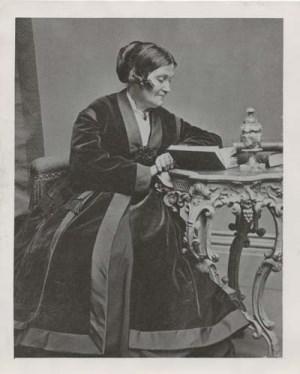
Abigail Bush
First Woman to Preside Over a Public Meeting Abigail Norton Bush was an abolitionist and women’s rights activist who served as president of the second women’s rights convention in Rochester, New York in 1848 immediately following the Seneca Falls Convention, and thus became the first American woman to serve as president of a women’s rights convention. Early life Abigail Norton Bush was born in Cambridge, Washington County, New York on March 19, 1810. When she was very young, her family moved to the upstate New York town of Rochester in upstate New York, which was the home of many early social reformers in the early and mid 1800s. In the 1830s, Bush worked for the Rochester Female Charitable Society, an…
Helen Benson Garrison
Abolitionist and Wife of William Lloyd Garrison While her husband got all the glory, Helen Benson Garrison was an abolitionist in her own right. She raised funds for the American Anti-Slavery Society in many ways, particularly as a manager of the annual Boston Anti-Slavery Bazaar. Helen Benson was born on February 23, 1811 in Providence, Rhode Island to George and Sarah Thurber Benson. At the June session of the General Assembly, in 1790, an “Act to incorporate certain Persons by the Name of the Providence Society for promoting the Abolition of Slavery, for the Relief of Persons unlawfully held in Bondage, and for improving the Condition of the African Race” was passed. Helen’s father, George Benson, became an active member…

Angelina Grimke
Abolitionist and Women’s Rights Activist The first woman to address a state legislature (Massachusetts in 1836), Angelina Grimke fearlessly traveled across New York and New England, speaking out against slavery at a time when women were scarcely seen and never heard in the public arena. In order to lecture about this sensitive issue she had to first fight for her right, as a woman, to participate in the abolionist movement. Born and raised in South Carolina, Grimke grew to detest the institution of slavery at an early age. Unable to influence her family to free their slaves, Angelina joined her older sister Sarah in Philadelphia, where they became Quakers, and soon thereafter began to fight for emancipation.
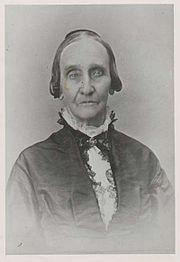
Amy Kirby Post
Abolitionist and Feminist in New York In her own day, Amy Post was well known as a radical Quaker abolitionist and feminist. In the late 1960s, feminists began searching for heroines, women whose lives could provide guidance and inspiration to a new generation of female activists. Many women who were first rediscovered as models of strength, self-reliance and ingenuity were residents of western New York, including Elizabeth Cady Stanton, Susan B. Anthony and Elizabeth Blackwell. Yet what made this region of New York, and Rochester in particular, a seedbed of female achievement was not only the few nationally renowned women who made a home there but also the dozens of women who day by day struggled to lead exemplary lives…
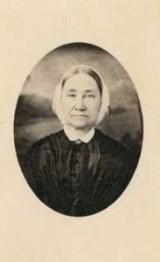
Sarah Pugh
19th Century Abolitionist and Feminist Sarah Pugh (1800-1884) was a dedicated teacher who founded her own school and devoted her life to the abolition of slavery and advancing the rights of women. She was co-founder and leader of the influential Philadelphia Female Anti-Slavery Society, a women’s group open to all races. Born in Virginia in 1800, Sarah Pugh moved to Philadelphia at the age of three when her father died, and spent her life in that city. She attended Westtown boarding school for two years, and in 1821 began teaching at the Friends School of the 12th Street Meeting. When the Quakers split the Hicksite and Orthodox factions, Sarah resigned and started her own school, which she ran for most…
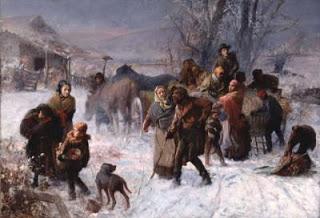
History of American Women Abolitionists
19th Century Anti-Slavery Activists Image: The Underground Railroad, 1891 painting by Charles Webber, depicts Catharine and Levi Coffin leading a group of fugitive slaves to freedom on a winter morning. The setting of the painting may be the Coffin farm in Cincinnati. White Women Abolitionists The increase in religious revivals known as the Second Great Awakening of the 1820s and 1830s led abolitionists to see slavery as a sin against humanity. By the 1830s, thousands of American women were involved in the movement to abolish slavery, and some became prominent leaders in the abolition movement. They wrote articles for abolitionist papers, circulated pamphlets and delivered petitions to Congress calling for abolition. Since the days of William Penn, Quaker practice had…
Harriet Tubman and the Underground Railroad
The Savior of Hundreds of Slaves Image: Harriet Tubman Leading The Way After Harriet Tubman escaped from slavery, she returned to the South nineteen times and escorted hundreds of slaves to freedom along the Underground Railroad, a secret network of brave abolitionists and safe houses where runaway slaves could rest during their journey north to the free states or Canada. Backstory She was born Araminta Ross around 1820 in Dorchester County, Maryland, on the plantation where her parents were enslaved. She later took her mother’s name as her own: Harriet. At age five or six, she was “hired out” by her master as a nursemaid for a small baby. She had to stay awake all night so that the baby…

Elizabeth Margaret Chandler
Advocate of the Immediate Abolition of Slavery Elizabeth Margaret Chandler was a noted author and abolitionist poet in the early 19th century who became the first woman in America to make the abolition of slavery the principal theme in her writing. Her brief life was marked by a series of literary achievements that can only be described as impressive, given the virtual invisibility of women at that time. Childhood Elizabeth Margaret Chandler was born December 24, 1807 in Centre, Delaware to Thomas and Margaret Evans Chandler. She had two older brothers, William Guest and Thomas. The Chandlers were members of the Religious Society of Friends (Quakers), and they lived the strict, orderly and disciplined life of a Quaker family.
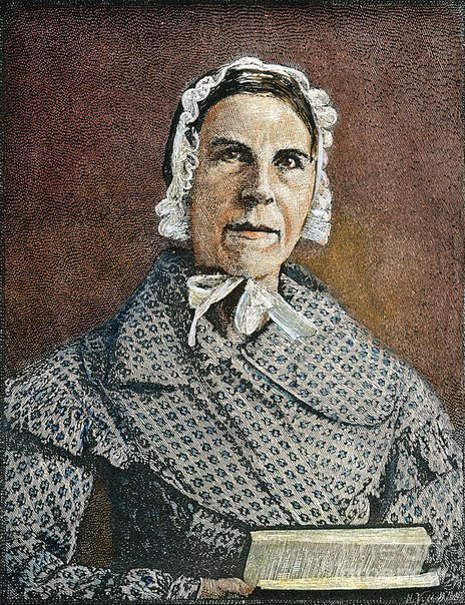
Sarah Grimke
Sarah Grimke helped pioneer the antislavery and women’s rights movements in the United States. The daughter of a South Carolina slave-holder, she began as an advocate for the abolition of slavery, but was severely criticized for the public role she assumed in support of the abolitionist movement. In Letters on the Equality of the Sexes, and the Condition of Woman (1838), Grimke defended the right of women to speak in public in defense of a moral cause. Childhood and Early Years Sarah Moore Grimke was born on November 26, 1792, in Charleston, South Carolina. She was the eighth of fourteen children and the second daughter of Mary and John Faucheraud Grimke, a wealthy plantation owner who was also an attorney…